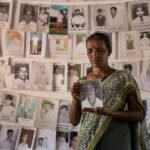In what ways did the riots affect the perception of safety and rights among the Tamil community in Sri Lanka?
The anti-Tamil riots of 1983 had a profound impact on the perception of safety and rights among the Tamil community in Sri Lanka. Here are several key ways in which the riots affected these perceptions:
1. **Heightened Fear and Vulnerability**: The violence during the riots instilled a deep sense of fear within the Tamil community. Many Tamils experienced firsthand the brutality of the attacks, leading to a perception that they were vulnerable and at risk of further violence from the Sinhalese majority.
2. **Loss of Trust in the Government**: The Sri Lankan government’s failure to protect Tamil citizens during the riots significantly eroded trust in state institutions. Many Tamils felt abandoned and believed that the government was either complicit in the violence or incapable of ensuring their safety and rights.
3. **Shift Toward Militarisation**: In response to the riots, many Tamils began to view armed struggle as the only viable means of securing their rights and safety. This shift contributed to increased support for militant groups like the LTTE, which promised to defend Tamil interests through armed resistance.
4. **Reinforcement of Ethnic Identity**: The riots solidified a collective Tamil identity, as the community united in the face of persecution. This reinforced the belief that Tamils needed to advocate for their rights and safety as a distinct ethnic group rather than attempting to integrate within a predominantly Sinhalese society.
5. **Demand for Autonomy**: The violence underscored the need for political recognition and autonomy. Many Tamils began to articulate demands for self-determination and greater political rights, viewing these as essential to their safety and security.
6. **Increased Activism and Advocacy**: The events of Black July galvanised Tamils both within Sri Lanka and in the diaspora to engage in activism and advocacy for Tamil rights. Human rights organisations emerged to document abuses and push for international attention and intervention.
7. **Psychological Impact**: The trauma of the riots had lasting psychological effects on the Tamil community. Many individuals and families experienced post-traumatic stress, shaping their perceptions of safety and leading to a pervasive sense of insecurity.
8. **Long-term Distrust**: The riots created a long-lasting atmosphere of distrust between the Tamil community and the Sinhalese majority. This distrust hindered efforts toward reconciliation and dialogue, making it difficult for both communities to work together to address grievances and build a peaceful future.
The anti-Tamil riots of 1983 significantly altered the Tamil community’s perception of safety and rights, leading to a collective sense of vulnerability, distrust in the government, and a shift toward armed resistance as a means of ensuring their survival and advocating for their rights. These changes have had a lasting impact on the dynamics of ethnic relations in Sri Lanka.






